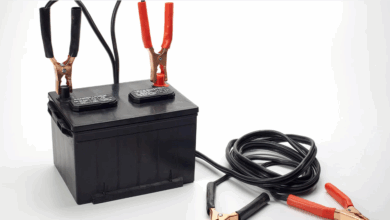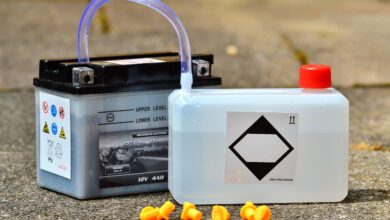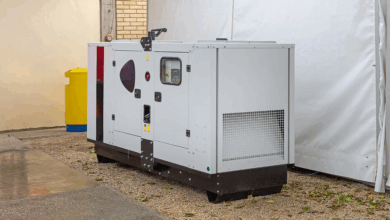The Essential Guide to 50 Amp Generators

The Essential Guide to 50 Amp Generators: Powering Your Biggest Needs
In an increasingly unpredictable world, reliable power is more than a convenience – it’s a necessity. Whether you’re facing a power outage, planning a large off-grid event, running a bustling job site, or hitting the road in a spacious RV, the need for substantial, dependable electricity is paramount. While smaller generators suffice for basic needs, powering multiple large appliances, central air conditioning, or heavy-duty tools simultaneously demands a more robust solution: a 50 amp generator.
But what exactly does "50 amp" mean in the world of generators, and how do you know if it’s the right fit for you? This essential guide will demystify 50 amp generators, exploring their capabilities, uses, key features, and what you need to consider before making this significant investment.
Understanding the Power: What is a 50 Amp Generator?
The term "50 amp" refers to the maximum continuous current (amperage) that the generator can safely deliver through its main high-output circuit, typically via a specialized NEMA 14-50R outlet. While generators have wattage ratings (the total power output in watts), the amperage rating, especially at higher voltages, tells you about their capacity for handling significant electrical loads and their compatibility with specific high-demand circuits.
Most residential and commercial heavy-duty loads operate at 240 volts. The power formula is Watts = Volts x Amps. A generator capable of delivering 50 amps at 240 volts can theoretically produce up to 12,000 watts (or 12 kilowatts) of power (50A 240V = 12,000W). This 12,000-watt figure (often representing the running wattage, with a higher starting or peak* wattage available briefly) is the key indicator of a 50 amp generator’s substantial capability. These generators are designed to handle the simultaneous demands of multiple power-hungry devices that would easily overwhelm smaller units.
Why Choose a 50 Amp Generator? The Powerhouse Advantage
Opting for a 50 amp generator typically means you have significant power requirements that go beyond just keeping the lights on. Here are the primary reasons people turn to these powerful machines:
- Whole Home Backup: For many average-sized homes, a 50 amp (10-12kW) generator provides sufficient power to run essential systems like the furnace or central air conditioner, refrigerator, well pump, lights, electronics, and other critical appliances during an outage. When connected via a proper transfer switch, it can provide a near-seamless transition to backup power for much of your home’s electrical panel.
- Large RVs and Motorhomes: High-end RVs often feature multiple air conditioning units, residential-style refrigerators, microwaves, and entertainment systems that draw considerable power. A 50 amp connection is standard for these vehicles, and a 50 amp generator is necessary to run all onboard systems concurrently without tripping breakers.
- Job Sites: Contractors and construction crews rely on heavy-duty power tools, air compressors, welders, and extensive lighting. A 50 amp generator can provide the necessary power and starting wattage surges required by this equipment, keeping the project moving efficiently.
- Outdoor Events and Remote Power: From weddings and concerts to farmers’ markets and remote filming locations, events requiring stages, sound systems, lighting rigs, catering equipment, and vendor booths often need a centralized, powerful source of electricity that only a generator of this size can provide.
- Redundancy and Capacity: Even if your typical load is slightly less, having the 50 amp capacity provides valuable headroom for starting surges and the ability to power more items if needed, offering greater flexibility and peace of mind.
Key Features and Considerations When Buying
Choosing the right 50 amp generator involves looking beyond just the amperage and wattage ratings. Several features impact performance, convenience, and safety:
- Wattage (Running vs. Starting): This is perhaps the most critical specification after the amperage rating.
- Running Watts: The continuous power the generator can supply. This is what you need to meet the steady demands of your running appliances.
- Starting Watts (Peak Watts): The brief surge of power needed to start motors in appliances like refrigerators, air conditioners, and pumps. This surge can be 2-3 times the running wattage of the appliance. Ensure the generator’s starting wattage capacity can handle the largest surge load you anticipate.
- Engine and Fuel Type:
- Gasoline: Most common and readily available. Requires fuel stabilization for storage and produces emissions.
- Propane (LP): Cleaner burning, longer storage life, quieter operation. Fuel tanks can be bulky. Runs slightly less efficiently than gasoline.
- Dual-Fuel: Offers the flexibility to run on either gasoline or propane, providing options based on availability or situation.
- Diesel: Most durable, fuel-efficient under heavy loads, and longest lifespan. Typically more expensive upfront and louder.
- Generator Type (Conventional vs. Inverter):
- Conventional: Uses an alternator to produce power directly at a fixed engine speed. Robust and often less expensive for high wattage. Can be louder and produce "dirtier" power (voltage fluctuations) that may not be ideal for sensitive electronics.
- Inverter: Uses advanced electronics to produce clean, stable AC power. Engine speed adjusts based on load, making them significantly quieter and more fuel-efficient. Ideal for powering sensitive devices like computers, phones, and medical equipment. High-wattage inverter generators are available but tend to be more expensive than conventional models of similar capacity.
- Outlet Configuration: A 50 amp generator must have the main NEMA 14-50R outlet (a large 4-prong outlet, often recessed). It should also ideally include other common outlets like 30 amp (L14-30R for 120/240V or TT-30R for 120V RV use) and standard 20 amp (5-20R) outlets for versatility.
- Portability vs. Stationary: While 50 amp generators are powerful, many come with wheel kits and handles for mobility. True "stationary" generators are permanently installed, often larger, liquid-cooled, and designed for automatic whole-home backup with an automatic transfer switch. Most portable 50 amp units require manual setup and connection.
- Noise Level: Measured in decibels (dB), generator noise can range from around 50 dB (like a quiet conversation, common in inverter types) to over 80 dB (comparable to a lawnmower or vacuum cleaner, typical for conventional models). Consider where the generator will be used and local noise regulations.
- Safety Features: Essential safety features include low-oil shutoff (protects the engine), overload protection (prevents damage from exceeding capacity), circuit breakers, and spark arrestors (especially important in wooded areas). CO (Carbon Monoxide) shutoff is a vital feature on newer models that automatically turns off the generator if CO levels become dangerously high in the operating area.
- Maintenance: Like any engine, generators require regular maintenance (oil changes, filter replacements, spark plug checks) to ensure reliable operation. Consider the ease of maintenance when choosing a model.
Calculating Your Specific Power Needs
To determine if a 50 amp generator is right for you, and what wattage you specifically need within that range, you must calculate your power requirements.
- List Appliances: Make a list of all the lights, appliances, and tools you potentially want to run simultaneously.
- Find Running Watts: Locate the wattage rating on each item (usually on a label). If only amperage is listed for a 120V device, multiply Amps x 120V = Watts. For 240V devices, multiply Amps x 240V = Watts.
- Identify Starting Watts: Note that appliances with electric motors (refrigerators, freezers, pumps, air conditioners, power tools) require a significant surge of power to start – the starting wattage. This is often 2-3 times their running wattage. You only need to account for the single largest starting wattage of any appliance you might start while others are already running.
- Calculate Total Running Watts: Add up the running watts of all the items you might run at the same time.
- Calculate Minimum Starting Watts Needed: Add the largest single starting wattage from your list to your total running watts. This is the minimum wattage capacity the generator needs to handle your load and start your largest motor.
- Add a Buffer: It’s wise to add a 10-20% buffer to your minimum starting wattage calculation to avoid overloading the generator and provide flexibility.
If your total required wattage (including the starting surge and buffer) falls within the typical 10,000 to 15,000+ watt range associated with 50 amp generators, then this class of generator is likely what you need.
Installation and Safety
Generators, especially powerful 50 amp units, demand careful handling and installation.
- Ventilation: NEVER run a generator indoors, in a garage, or near windows/doors. Generators produce deadly carbon monoxide. They must be operated outdoors, far from occupied buildings, with exhaust directed away.
- Transfer Switch/Interlock Kit: For home backup, a professional electrician must install a transfer switch or interlock kit. This is the ONLY safe way to connect a generator to your home’s electrical panel, preventing dangerous backfeed into the utility lines (which can electrocute utility workers) and avoiding damage to your home’s wiring. Plugging a generator directly into a wall outlet (backfeeding) is extremely dangerous and often illegal.
- Grounding: Ensure the generator is properly grounded according to the manufacturer’s instructions and local codes.
- Fuel Storage: Store fuel safely in approved containers, away from the generator and ignition sources.
FAQs
- How much can a 50 amp generator power? Typically, a 50 amp generator provides 10,000 to 12,000 (or more) running watts, which is often enough to power most essential circuits and even central air conditioning in a typical medium to large home, run multiple ACs and appliances in a large RV, or handle heavy-duty tools on a job site.
- Is 50 amps enough for a whole house? For many homes, yes. It can power critical appliances, HVAC, lights, and electronics. However, it depends heavily on the home’s size, energy efficiency, and what appliances you intend to run simultaneously. An energy audit or discussion with an electrician can confirm your specific needs.
- What’s the difference between running watts and starting watts? Running watts is the continuous power needed to operate devices. Starting watts is the brief surge required to start electric motors (like those in ACs or fridges). The generator must have enough starting wattage capacity to handle the largest motor you start.
- Should I get a conventional or inverter 50 amp generator? Conventional generators are often more budget-friendly for high wattage and very robust, suitable for job sites or powering non-sensitive loads. Inverter generators are quieter, more fuel-efficient, and produce clean power safe for electronics, making them preferable for RVs, homes with sensitive equipment, or anywhere noise is a major concern, but they are typically more expensive.
- What kind of outlet is the 50 amp outlet? The standard 50 amp 120/240V outlet on generators is the NEMA 14-50R. It has four prongs.
- How long will a 50 amp generator run on a tank of fuel? Run time varies greatly depending on the generator’s fuel tank size, fuel type, and the load (how many watts it’s currently producing). Running at half load is usually more fuel-efficient per watt than running at full load. Check the manufacturer’s specifications for estimated run times at different load levels.
- Can I plug my 50 amp generator directly into my house? ABSOLUTELY NOT. Plugging a generator directly into a standard wall outlet (backfeeding) is extremely dangerous, risking electrocution and damage. A transfer switch or interlock kit professionally installed is mandatory for safely connecting a generator to your home’s electrical system.
Conclusion
A 50 amp generator represents a significant step up in portable power capability. It’s a workhorse designed for substantial electrical demands, whether providing comfort and security during a power outage, enabling off-grid adventures, or powering demanding professional equipment. Understanding the relationship between amps, volts, and watts, assessing your specific power needs, and considering key features like fuel type, generator technology (inverter vs. conventional), and safety features are crucial steps in selecting the right model.
While the investment is larger than for smaller generators, the versatility and reliability a 50 amp unit offers can provide invaluable peace of mind and operational capacity. By doing your research and prioritizing safety, you can harness the power of a 50 amp generator to keep your essential systems running, your projects on track, or your adventures powered up, no matter what comes your way.




![How to Bypass CO Sensor on Generator – [4-Step Safety Guide]](https://www.generator411.com/wp-content/uploads/2025/08/co-sensor-on-generator-390x220.png)